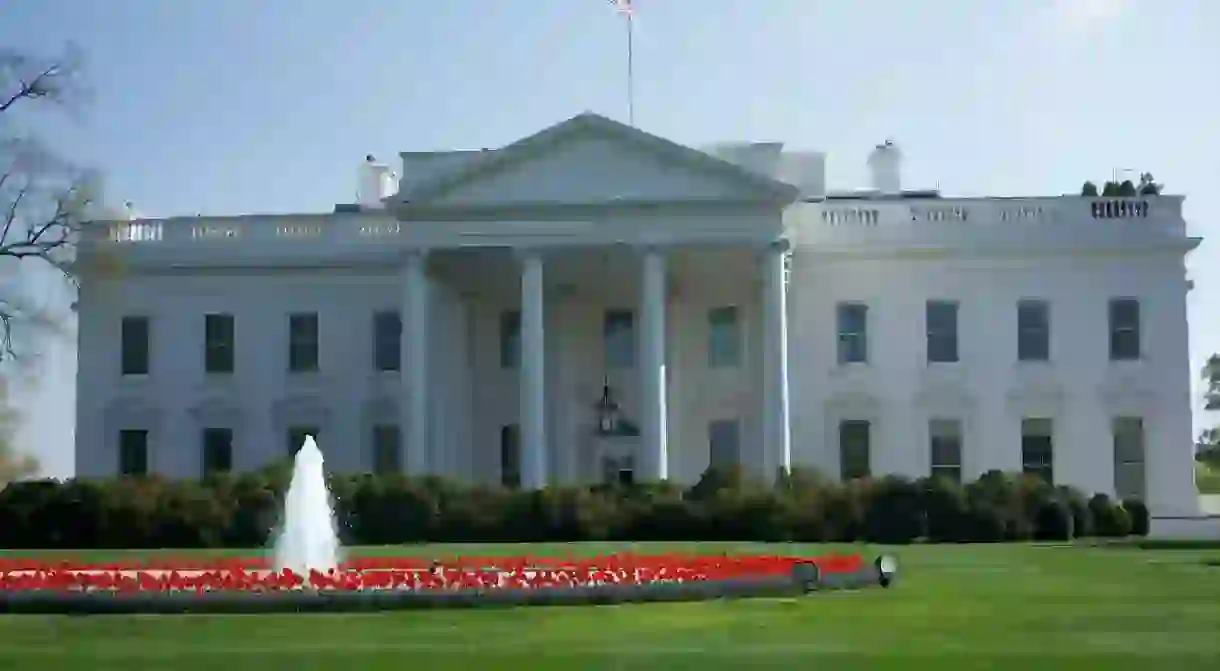The Tumultuous History Of The White House

The White House is burning – these famous words echoed through the capital city in 1814. British troops had set the president’s house ablaze during the War of 1812. The house burned to the ground, and the original architect was hired to construct a new mansion atop the ashes of the old. Culture Trip looks at the history of this first White House, and the story behind the present day building.
Within architect Pierre L’Enfant’s Grand Plan for Washington, D.C., a presidential mansion was a prominent feature in the city’s layout. George Washington was to temporarily reside in Philadelphia while the house was constructed; the 1790 Residence Act had designated Philadelphia the capital city for ten years during the construction of DC. A design competition was held to select blueprints for the house, and even Thomas Jefferson entered anonymously. Washington ultimately accepted Irish architect James Hoban’s submission.
Construction of The White House commenced in 1792, and the labor was largely completed by undocumented immigrants and slaves. (Cue Michelle Obama discussing how “I wake up every day in a house that was built by slaves.”) The house wasn’t completed until after Washington left office, and President John Adams became the first of three presidents to live within these walls.

But the British arrived a decade later and ransacked the capital city, setting fire to The White House, Capitol Building, and other iconic government structures. Scores of historical artifacts were lost in the fires and stolen by foreign troops, but First Lady Dolley Madison famously forego her personal belongings to rescue a life-sized portrait of George Washington in The White House, ordering servants to break it from the frame, and they evacuated the house with the portrait rolled up in tow (which presently resides in the White House.) The city was evacuated, and the event marks the only time DC has been occupied by a foreign force. The occupation lasted a mere 26 hours, halted by an unexpected hurricane that ravaged British ships, and it became known as “The Storm That Saved Washington.”
After the red coats set The White House ablaze, President James Madison took residence in the still-standing Octagon House. Hoban was again called in to lead the reconstruction project and issue new blue prints. Influenced by his own homeland, Hoban purportedly modeled The White House 2.0 after The Leinster House in Dublin.

At the end of the reconstruction, the White House consisted of an East Wing and executive residence. The West Wing wasn’t constructed until Theodore Roosevelt’s administration, as the former president’s large family didn’t fit comfortably in the current residence. They desired more space, and extensive additions were implemented. The ensuing Oval Office was commissioned under President Howard Taft. From 1949-1952, President Truman authorized an extensive restoration project to restore the decaying interior from years of neglect, hastened and sloppy construction, and inadequate foundations.
During Nixon’s administration, the White House interior received a more aesthetically focused facelift; First Lady Pat Nixon furnished the Red Room, Blue Room, and Green Room, transforming them into iconic design palettes in the nation’s most famous home, which have barely been altered since that day. Her curated efforts delivered 600 artifacts to furnish and embellish the White House, the most brought by any presidential administration.

The White House is now comprised of The East Wing, West Wing, and Executive Residence. There’s also a lofty Presidential China Room, in which each presidential administration designs their own set of ornate china to add to the collection. Each administration leaves their mark on the famed house, shaping the structure into its present day awe.
Unfortunately, due to growing security concerns, The White House is becoming increasingly inaccessible to the general public. Scores of fence jumping incidents have led to larger fences and more barricades, pushing the president further and further out of reach of the American people. While a wealth of fences make for inconvenient photographs, the house still stands in patriotic glory – the symbol of America’s ingenuity and tenacity, but also of its darker days.














